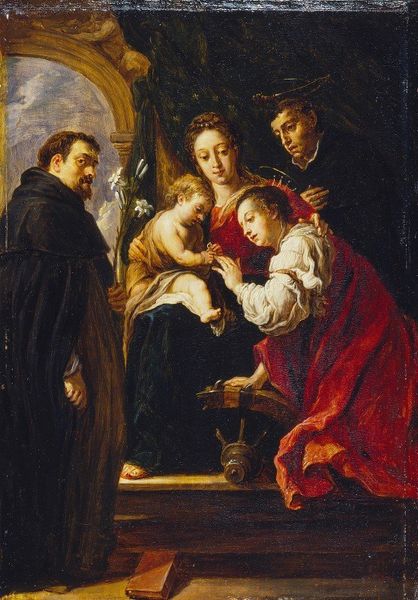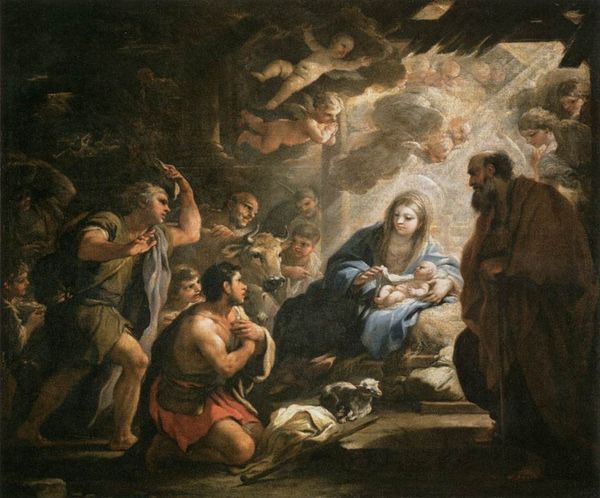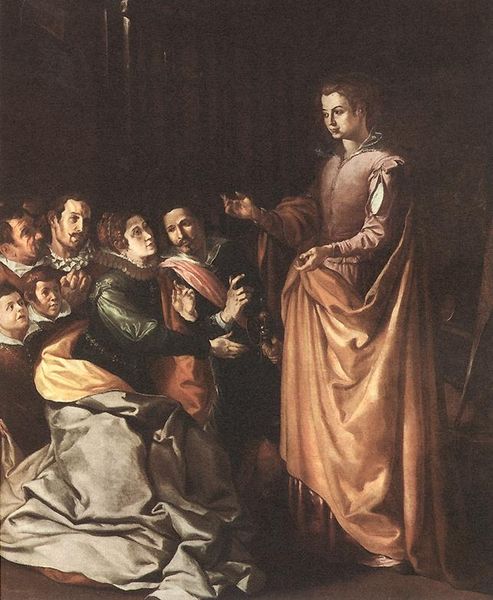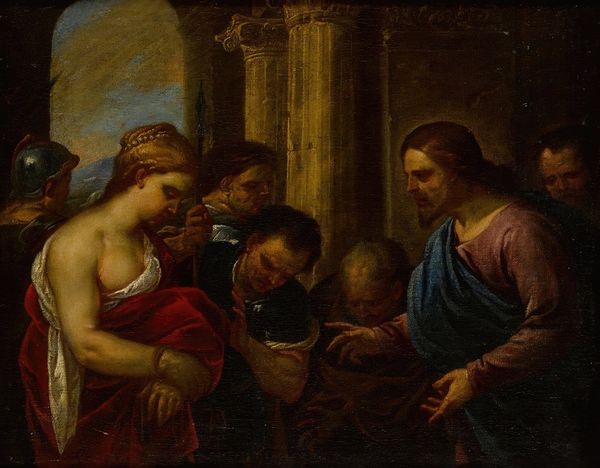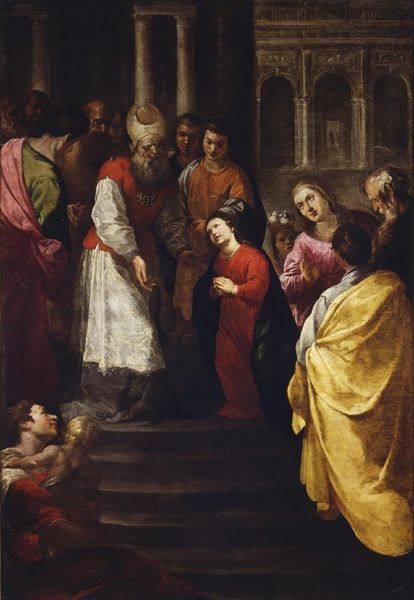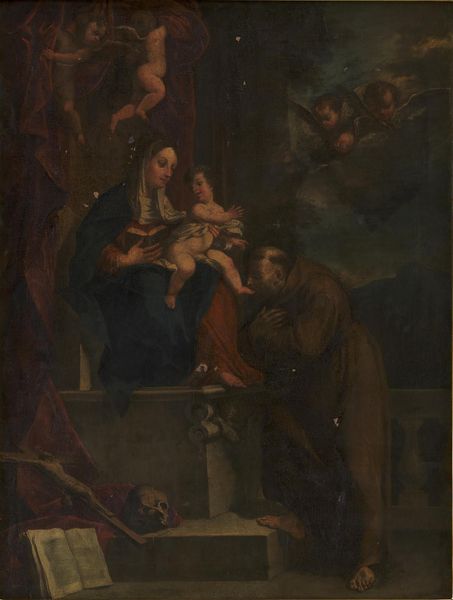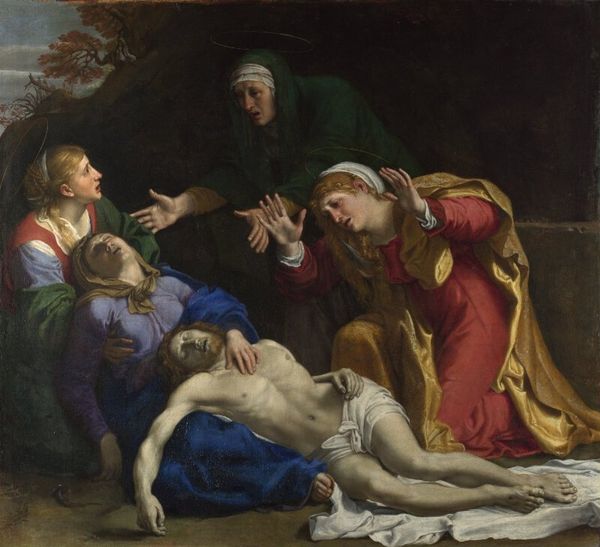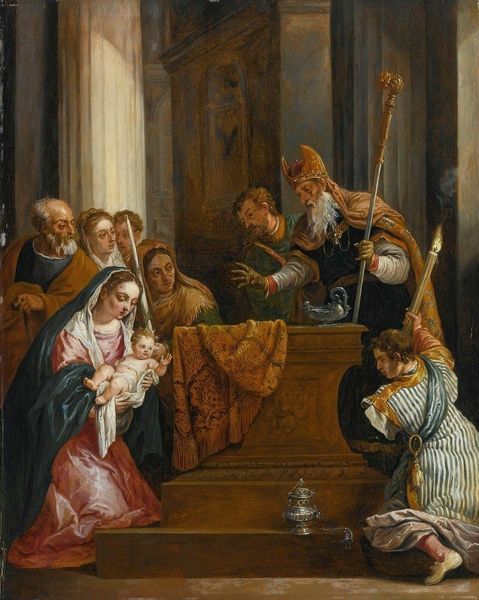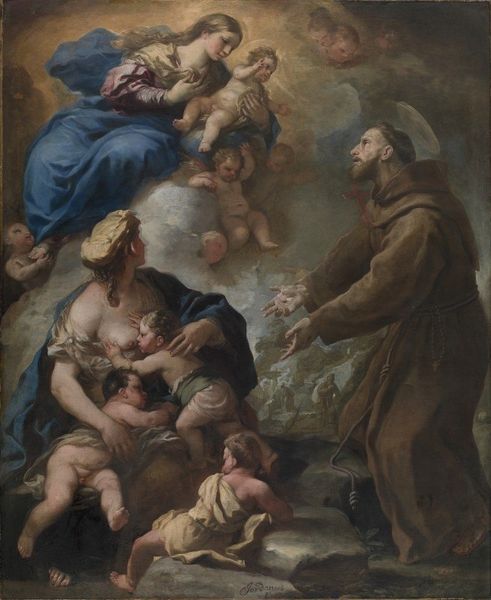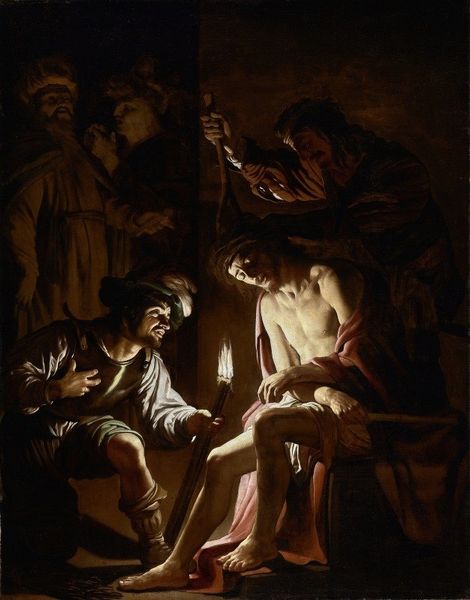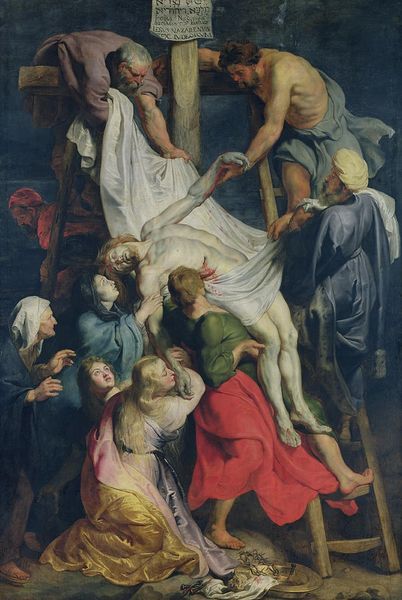
painting, oil-paint
#
narrative-art
#
baroque
#
painting
#
oil-paint
#
figuration
#
oil painting
#
history-painting
Copyright: Public domain
Curator: Juan Carreño de Miranda's "Santa Ana enseñando a leer a la Virgen," created around 1676 with oil on canvas, presents an intimate scene. My initial impression is that of a somber atmosphere, despite the potentially joyful act of learning. There's a palpable gravity in the figures' expressions. Editor: Yes, the weightiness certainly resonates. Notice how the figures are positioned. We have Saint Anne guiding Mary in her reading, but her eyes, lined with worry, and Mary’s bowed head project humility. Curator: Indeed, humility and foreshadowing perhaps? Education becomes linked with destiny here, an unfolding of religious narrative and the crucial role of women within it. Books themselves gain an added symbolic layer as conduits of divine knowledge, tools for understanding a sacred history. Editor: Precisely. Consider also the social context: images of female literacy become more common during this period, reflecting debates around women’s roles and education, albeit usually within a domestic religious sphere, of course. The historical backdrop shaped artistic choices just as much as piety did. Curator: Observe the cherubs above, too. They seem almost curious, hovering just outside the immediate human drama. Their expressions suggest anticipation of events to come. What do they already know that these women are just learning? They amplify the divine gaze under which all unfold, adding layers of significance and reinforcing a shared visual memory among viewers then and now. Editor: And there is Saint Joachim! Although he recedes into the background he is also present in this scene as a quiet observer of his family. I wonder, also, about the patron of the painting: would it hang in a public church or in the patron’s more private, domestic setting? Curator: Knowing Carreño de Miranda, and the sensibilities of the time, both options seem possible. The rich color palette—the blues of Mary's garment against the warmer tones of Anne's robe—could thrive either in the echoing acoustics of a cathedral or in a personal chapel setting. It seems like this piece aims to inspire awe but also encourages introspection. Editor: So, it’s both a public declaration of faith and a prompt for individual reflection, elegantly capturing an era's complex negotiations with faith, politics, and personal belief. Curator: A fitting summary. It bridges those grand historical narratives with these more human, intimate gestures of learning.
Comments
No comments
Be the first to comment and join the conversation on the ultimate creative platform.
